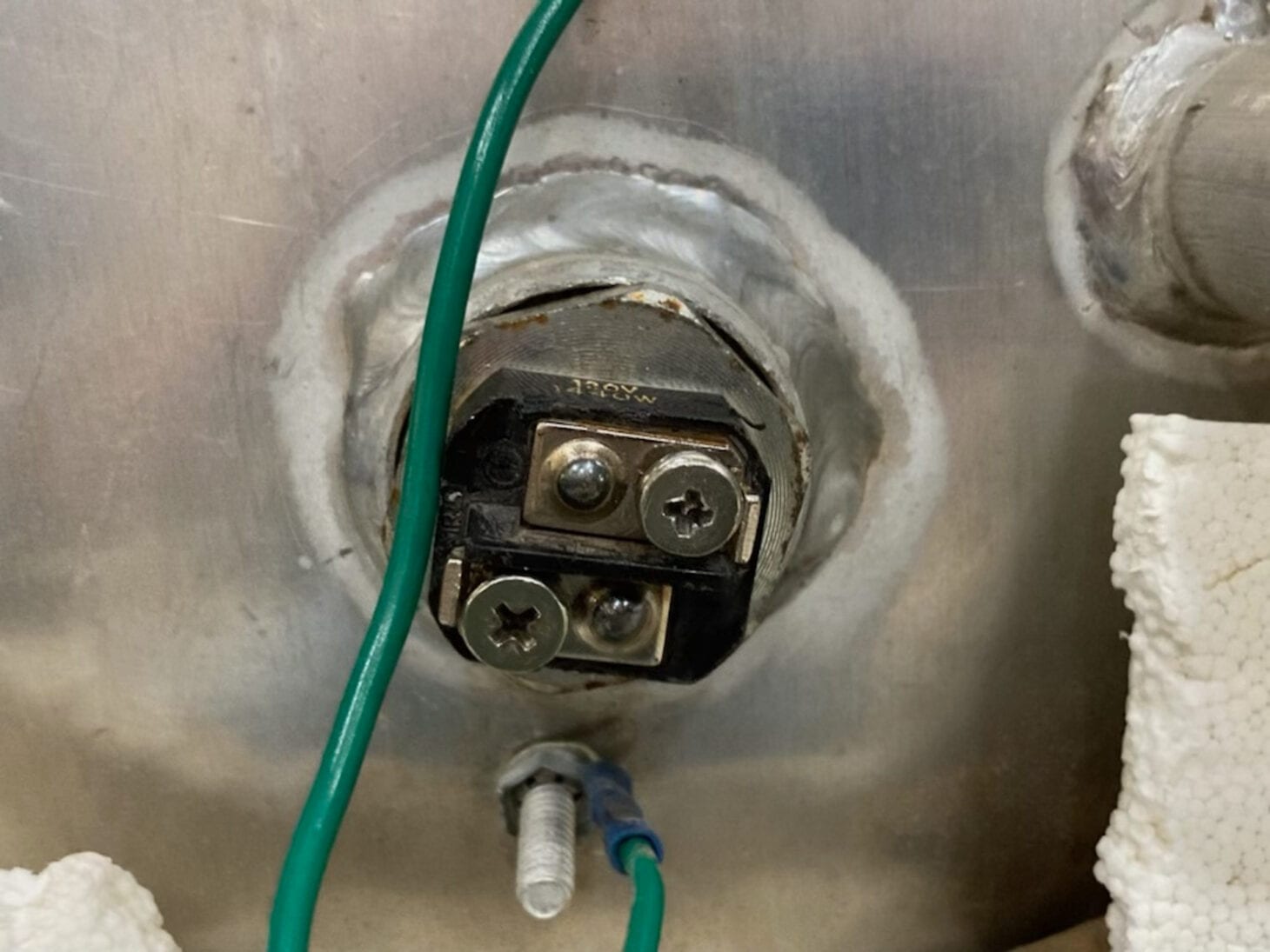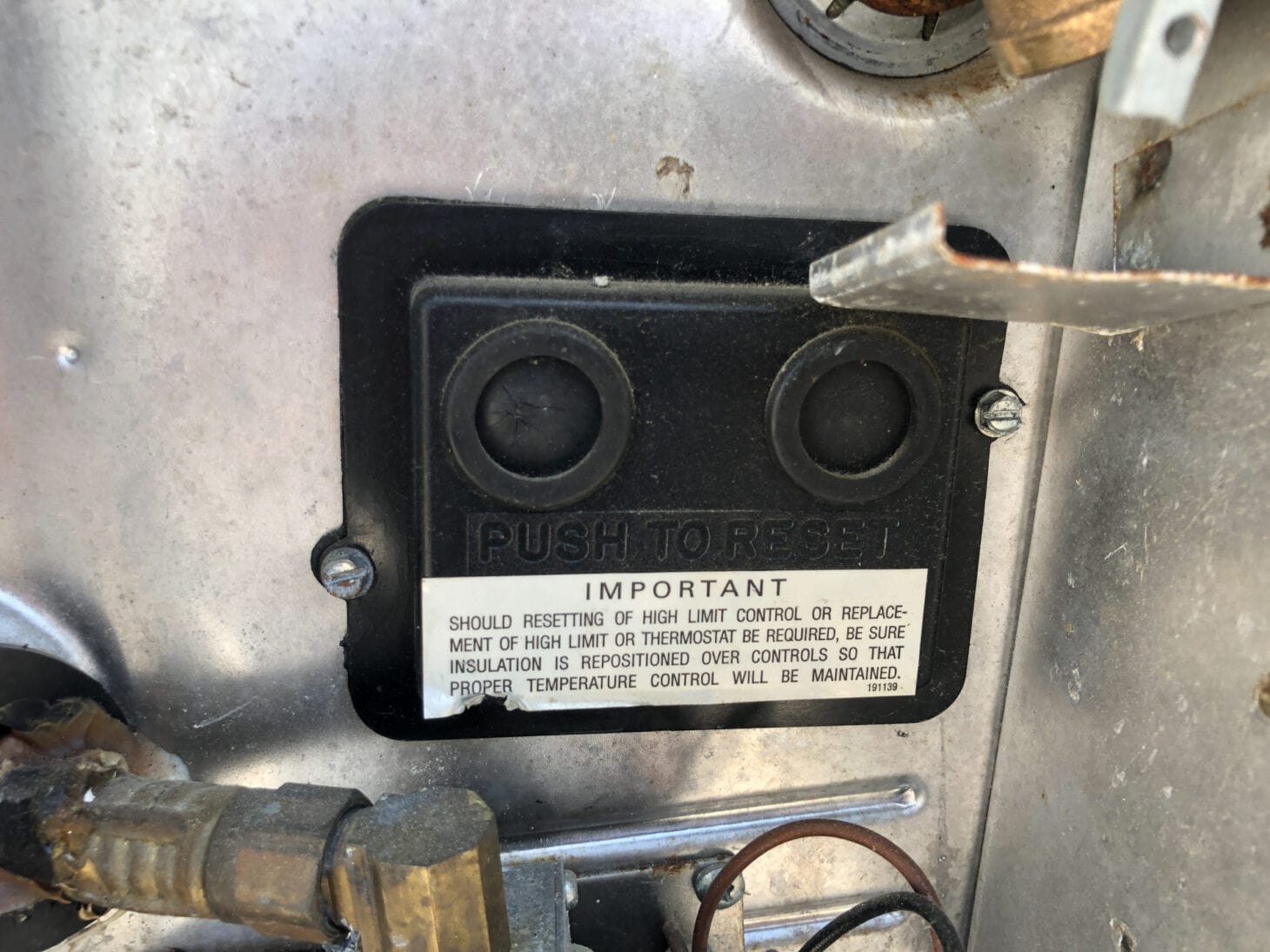Your RV’s water heater is one of the most regularly used appliances in your rig, no matter what season it is. Which makes it even more frustrating when this system isn’t working properly, or worse, not working at all.
From lukewarm water to no hot water to lighting issues, there are a few common problems that go along with RV water heaters. But with a better understanding of how your water heater operates, there are several simple troubleshooting solutions to remedy these issues—usually without the need for any special parts or tools.
Here are a few troubleshooting tips to help you tackle the most common tankless and tank-style water heater issues in your RV.

Troubleshooting: Lukewarm Water
Since the water temperature is lukewarm, you know the water heater is attempting to do its job inside the tank; however, it’s actually mixing with cold water somewhere outside of the tank. If this situation happens to you, you can quickly narrow it down to a couple of locations.
- First, look at the bypass handles on the back of your water heater tank or in your water bay compartment to confirm they’re completely turned to the proper position and not set for winterization.
- Also check the water pressure on the showerheads in your bathrooms and outdoor showers to ensure the head is fully opened, and water flow isn’t being restricted. A common problem is that users turn off the water at the outdoor showerhead and not at the faucet handle, which also causes the cold and hot water to mix.
- Check the push button on any handheld showerheads to make sure it’s open and not restricting water flow.
These situations can result in cold mingling with hot water instead of keeping the flow directed through the water heater tank properly.

Troubleshooting: Power Issues
If you have a tank-style water heater that operates on both propane and shore power, but your 120-volt shore power isn’t cooperating, there are a couple of items to check.
Some of these solutions are simple, while one solution requires special tools or help from an RV technician.
- Check to make sure you have a proper shore power connection and that the breaker on your campground pedestal is turned on.
- You should also check the 120-volt breaker panel in your RV’s electrical panel box to make sure that the water heater breaker isn’t tripped. Your 120-volt heating element consumes between 1,440 to 1,500 watts of power while heating, so you’ll want to ensure that the amount of power doesn’t exceed the power capabilities of your RV.
- If you have a multimeter, you can check your water heater’s heating element without draining your tank or removing the element. For Atwood and Dometic systems, your heating element is located on the back of your water heater. For Suburban systems, it’s located on the front within the exterior water heater compartment.
- With the 120-volt system of your RV turned off, set your multimeter to ohms, and place your leads on the metal plates under the screw heads of your heating element.
- Your reading should be between 9.6 to 10 ohms, depending on the element’s total wattage. If your reading is out of range by more or less than 10 percent, then your heating element should be replaced, and you should contact an RV electrical technician to make this repair.
Troubleshooting: Lighting Issues
Another common water heater frustration revolves around igniting your system’s flame. Faulty flames or ignition complications and malfunctioning power switches are a few of the problems you can encounter. Most of these issues can be easily solved with a little troubleshooting, but more persistent problems might call for professional assistance.
- Since your propane ignition process is powered by your RV’s 12-volt battery power, you should first check your 12-volt fuse inside your rig’s electrical panel to ensure it’s not blown.
- If your fuse checks out, then it’s time to turn to your propane tanks. Confirm that your tanks have enough propane and that your service valve is completely open.
- If your problem persists, it’s likely you have a faulty gas valve (solenoid) or ignitor, a dirty burn chamber, or a flame issue. These obstacles will likely call for an RV technician’s expertise for repair.

Troubleshooting: Resetting the Water Heater
You might need to reset your tank-style or tankless water heater for various reasons. One of those scenarios occurs when a safety feature (ECO or high-temperature limit switch) has deactivated the heater after detecting a water temperature that’s exceeded its maximum safety limit.
- For tank-style water heaters like Atwood and Dometic, and most tankless systems, turn the system off and back on to reset your 12-volt panel and circuit board.
- For tank-style water heaters like the Suburban brand, simply press the reset buttons located in the exterior compartment of your system.
Keep in mind that when the high-temperature limit or emergency cut-off switch has tripped, there’s a potential problem with your water heater. If the issue persists, the cause could be a faulty thermostat, or, for tankless heaters, it could be time for decalcification. Don’t continue to reset the water heater repeatedly. You may need to contact an RV technician if your thermostat needs to be replaced on your tank-style water heater.
Troubleshooting: Tankless and On-Demand Temperatures
Your tankless or on-demand system has a few issues unique to this style of water heater. A tankless water heater is like a mini boiler system—activation is based on water flow volume and demand from the user. When one of the hot water faucets is opened and water flow reaches a preset volume per minute, this sends a signal to kick the water heater on. If the water flow volume dips below the preset gallons or liters per minute, a signal is sent to the system to shut the water heater off and preserve propane.
Frustrations can occur when a user adjusts the hot water faucet handle in an attempt to change the water temperature. In reality, they’re adjusting the water flow, which adversely affects the water temperature.
How can you achieve a satisfactory shower water temp with tankless units?
- Some systems have a preset water temperature of 120 degrees Fahrenheit that can’t be adjusted at the water heater. The desired temperature at your faucet is achieved by mixing hot water with cold water, not by adjusting the hot water faucet to a point where it shuts off your system.
- Other tankless systems have an adjustable thermostat that allows you to set your ideal water temperature for an easier experience. Once set, open the hot water faucet and refrain from adjusting the handles any further.
Common Questions About RV Water Heater Problems
The interior panel operates on a 12-volt direct current system. Check the 12-volt fuse and battery charge levels if it’s not illuminated or dead.
The thermostat on your tank-style water heater continuously attempts to maintain a specific temperature based on factory settings, whether you’re using hot water or not. So, if you need to conserve propane, then you shouldn’t keep your water heater on all of the time. If you’re using the water heater on 120-volt electric, it might not be as much of an issue to keep the system on unless you’re exceeding your RV’s power capabilities while using other appliances.
Tankless water heaters are meant to be left on as they are very efficient and don’t light the flame unless there is a demand for hot water when a faucet is opened.

The power switch inside Suburban water heaters is for an RV technician to turn the water heater off for service or repairs quickly. Leave it on. Use the interior switch to power the unit off and on.

To see if water is in the tank, lightly touch the brass “P&T” (pressure and temperature) relief valve when the water heater is on. If it’s warm, there’s water inside the tank. Or, with the system completely cooled down, carefully open the valve to see if water escapes. If the water level is below the valve opening, remove the drain plug to see if water comes out.
It takes approximately 10 to 15 minutes for water to heat on propane and up to 30 minutes on electric.
If your RV water heater utilizes an anode rod, like the Suburban brand, drain the tank and check it at least twice a year. You might also need to drain the water heater if your water lines are smelly, indicating that it’s time to sanitize the plumbing system and the water heater. A technician might also need to drain it while performing a repair.
When to Consult an RV Tech
These troubleshooting tips can help you handle some common RV water heater issues on your own. However, there are going to be problems that require the expertise of an RV technician, like the propane gas flame color not burning blue, replacing the 120-volt water heater element, replacing the gas valve (solenoid), the ignitor not operating, or the LP detector alarm indicating a propane leak.
